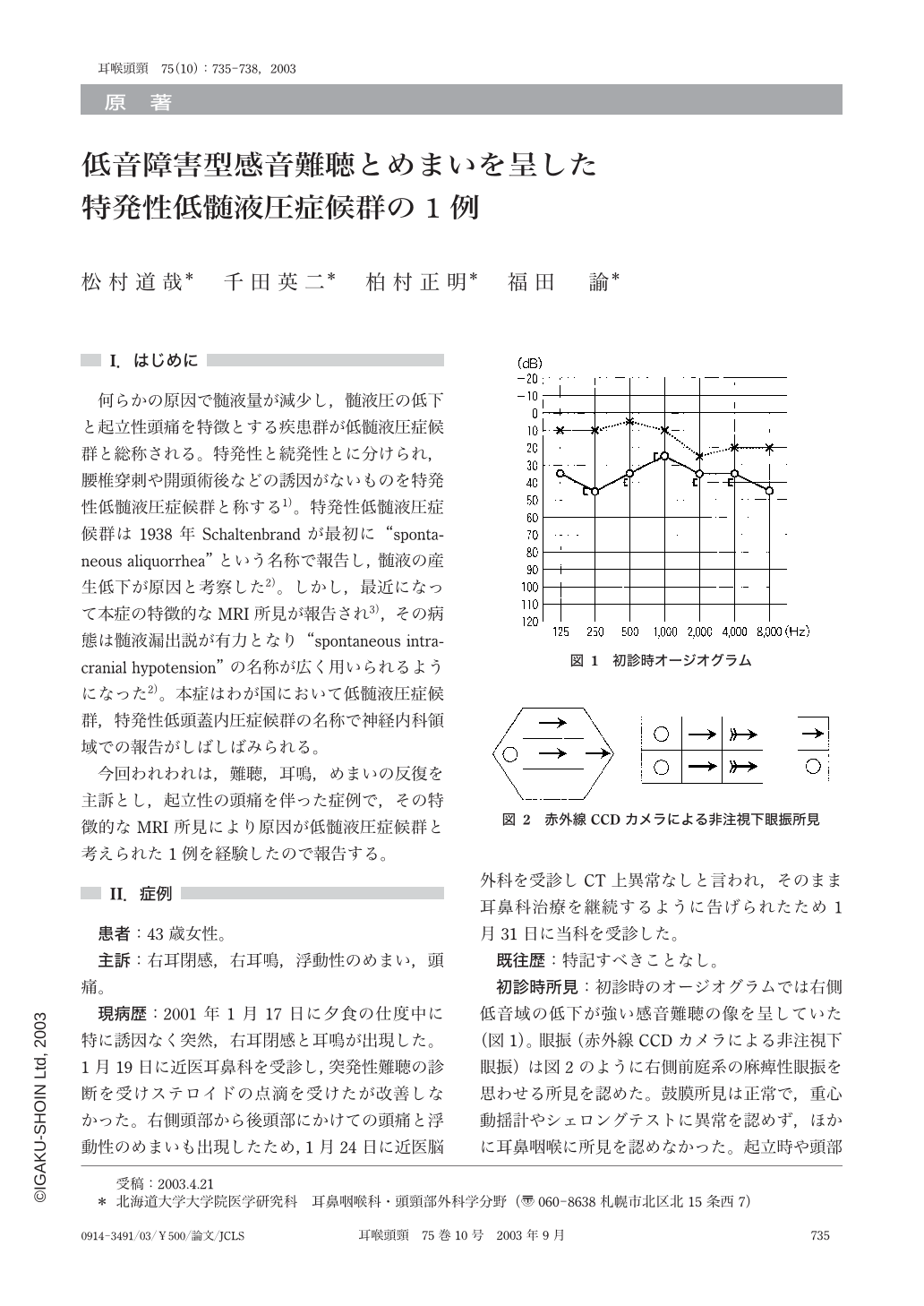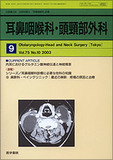Japanese
English
- 有料閲覧
- Abstract 文献概要
- 1ページ目 Look Inside
I.はじめに
何らかの原因で髄液量が減少し,髄液圧の低下と起立性頭痛を特徴とする疾患群が低髄液圧症候群と総称される。特発性と続発性とに分けられ,腰椎穿刺や開頭術後などの誘因がないものを特発性低髄液圧症候群と称する1)。特発性低髄液圧症候群は1938年Schaltenbrandが最初に“spontaneous aliquorrhea”という名称で報告し,髄液の産生低下が原因と考察した2)。しかし,最近になって本症の特徴的なMRI所見が報告され3),その病態は髄液漏出説が有力となり“spontaneous intracranial hypotension”の名称が広く用いられるようになった2)。本症はわが国において低髄液圧症候群,特発性低頭蓋内圧症候群の名称で神経内科領域での報告がしばしばみられる。
今回われわれは,難聴,耳鳴,めまいの反復を主訴とし,起立性の頭痛を伴った症例で,その特徴的なMRI所見により原因が低髄液圧症候群と考えられた1例を経験したので報告する。
We reported a case of spontaneous intracranial hypotension in a 43-year-old woman. The patient complained of hearing loss and tinnitus in her right ear,dizziness and headache. Her cranial MRI with gadolinium infusion showed a diffuse enhancement of the whole dura mater,and her audiogram showed a low-tone sensorineural hearing loss of the right ear. Her complaints disappeared under conservative observation of 6 weeks after the initial symptom. This case suggested that low-tone sensorineural hearing loss and dizziness of the patients with spontaneous intracranial hypotension were caused by a relative endolymphatic hydrops resulting from a discharge of perilymphatic fluid through the cochlear aqueduct.

Copyright © 2003, Igaku-Shoin Ltd. All rights reserved.


